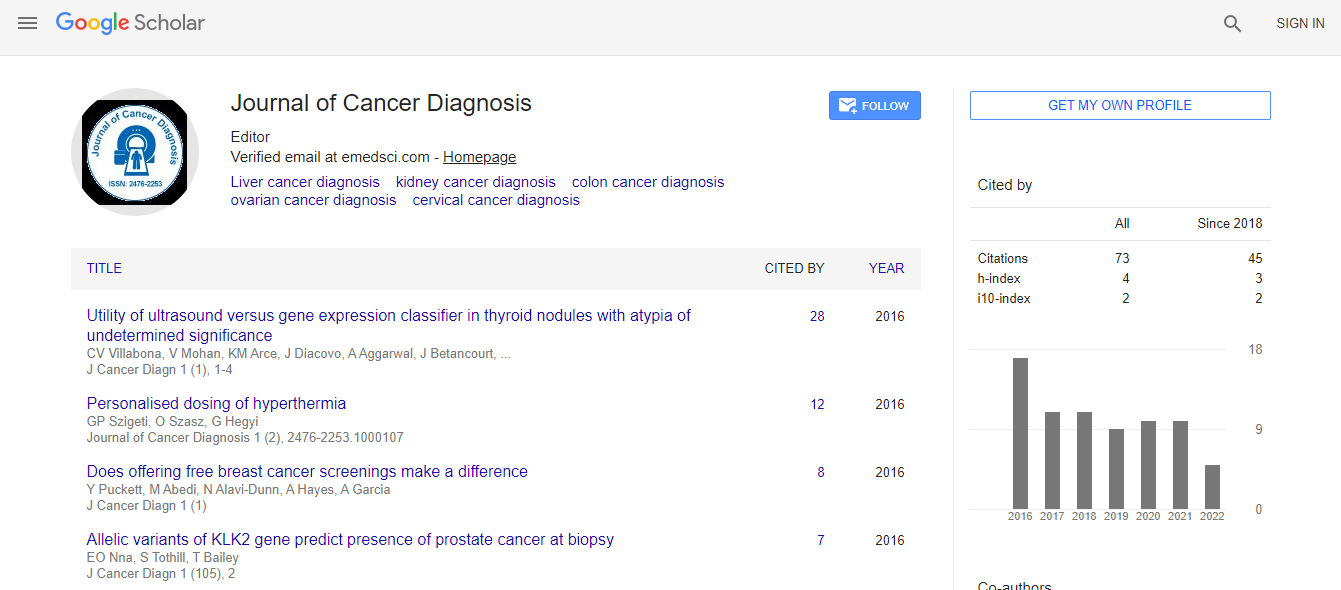Deep Learning-Enhanced Urine Cytology for Early Bladder Cancer Detection: A Novel Non-Invasive Diagnostic Approach
*Corresponding Author: Ahmad Mansoori, Department of Biomedical Engineering, Khalifa University, Abu Dhabi, United Arabic Emirates, Email: ahmad.a972@gmail.comReceived Date: Mar 01, 2025 / Accepted Date: Mar 31, 2025 / Published Date: Mar 31, 2025
Citation: Ahmad M (2025) Deep Learning-Enhanced Urine Cytology for EarlyBladder Cancer Detection: A Novel Non-Invasive Diagnostic Approach. J CancerDiagn 9: 285.
Copyright: © 2025 Ahmad M. This is an open-access article distributed under theterms of the Creative Commons Attribution License, which permits unrestricteduse, distribution, and reproduction in any medium, provided the original author andsource are credited.
Abstract
Bladder cancer is a leading cause of morbidity and mortality worldwide, with early detection being critical for effective management and improved patient outcomes. Urine cytology is a standard non-invasive screening tool but suffers from low sensitivity, especially for low-grade tumors. Recent advancements in artificial intelligence (AI) and deep learning offer new possibilities to enhance diagnostic accuracy. This paper presents a novel deep learning-enhanced urine cytology framework designed to improve the early detection of bladder cancer. Using convolutional neural networks (CNNs), the system automatically analyzes digitized cytology slides, distinguishing malignant from benign urothelial cells with high precision. This approach aims to address limitations in traditional cytological evaluation, offering a scalable, non-invasive, and highly accurate diagnostic tool suitable for both clinical and remote settings.

 Spanish
Spanish  Chinese
Chinese  Russian
Russian  German
German  French
French  Japanese
Japanese  Portuguese
Portuguese  Hindi
Hindi 